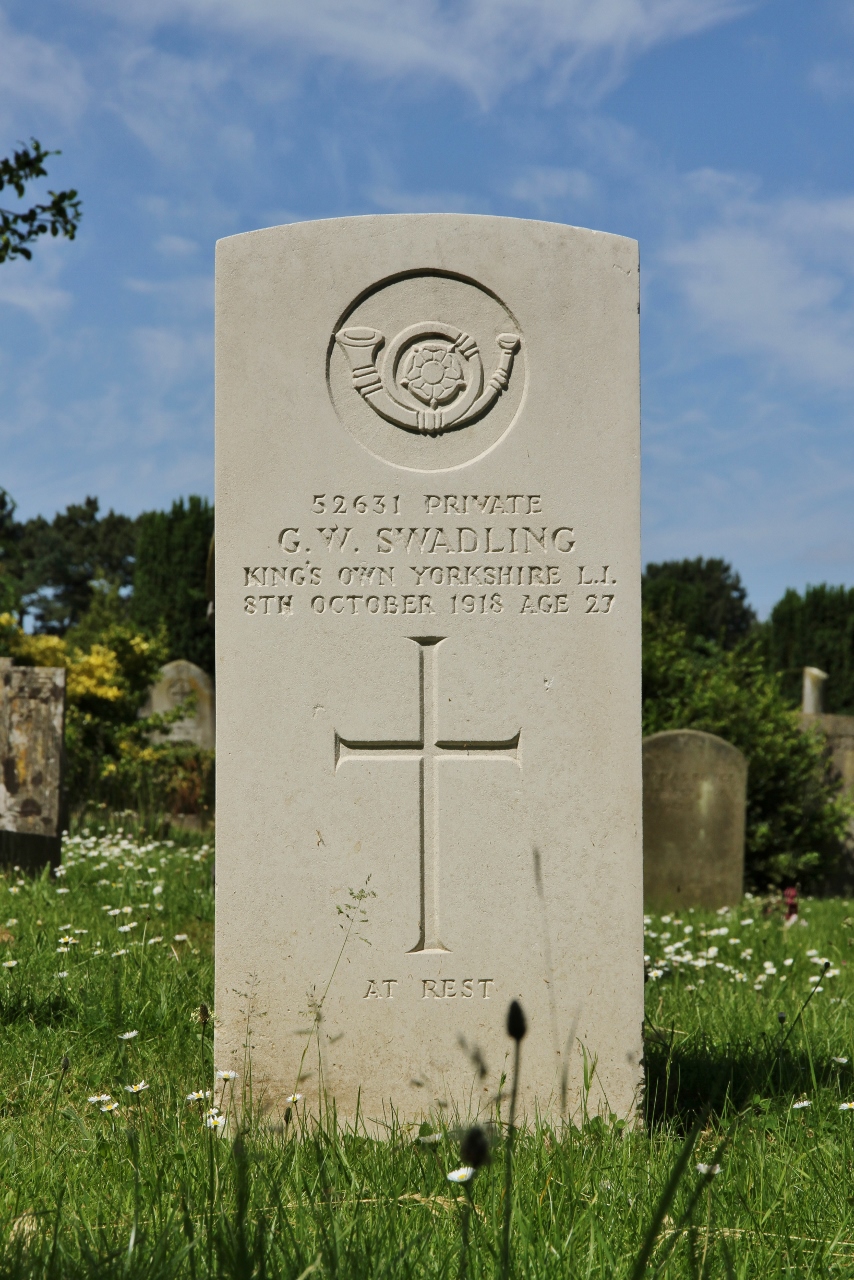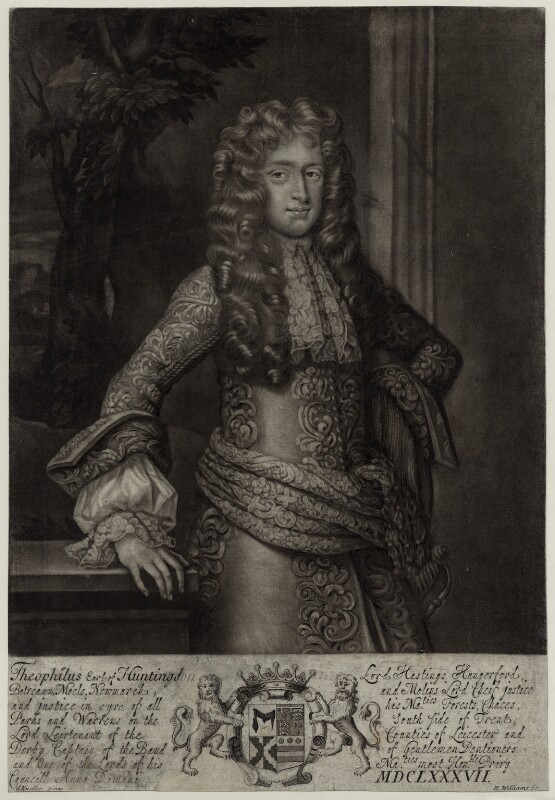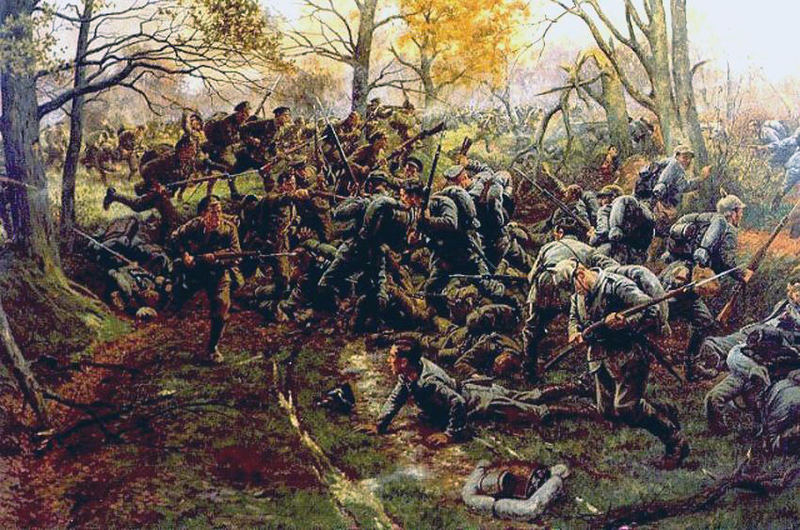|
14th (Light) Division
The 14th (Light) Division was an infantry division of the British Army, one of the Kitchener's Army divisions raised from volunteers by Lord Kitchener during the First World War. All of its infantry regiments were originally of the fast marching rifle or light infantry regiments, hence the title "Light". It fought on the Western Front for the duration of the First World War. The division was disbanded by March 1919, and was not reformed in the Second World War. Order of battle The division comprised the following infantry brigades, which underwent major changes between February 1918 (the Army's brigade reorganisation from 4 to 3 infantry battalions) and June 1918 (rebuilt after the losses of the German spring offensive). ; 41st Brigade: *Before June 1918 **7th Battalion, The King's Royal Rifle Corps (''left February 1918'') **8th Battalion, The King's Royal Rifle Corps **7th Battalion, The Rifle Brigade (Prince Consort's Own) **8th Battalion, The Rifle Brigade (Prince Consort' ... [...More Info...] [...Related Items...] OR: [Wikipedia] [Google] [Baidu] |
Infantry
Infantry is a military specialization which engages in ground combat on foot. Infantry generally consists of light infantry, mountain infantry, motorized infantry & mechanized infantry, airborne infantry, air assault infantry, and marine infantry. Although disused in modern times, heavy infantry also commonly made up the bulk of many historic armies. Infantry, cavalry, and artillery have traditionally made up the core of the combat arms professions of various armies, with the infantry almost always comprising the largest portion of these forces. Etymology and terminology In English, use of the term ''infantry'' began about the 1570s, describing soldiers who march and fight on foot. The word derives from Middle French ''infanterie'', from older Italian (also Spanish) ''infanteria'' (foot soldiers too inexperienced for cavalry), from Latin '' īnfāns'' (without speech, newborn, foolish), from which English also gets '' infant''. The individual-soldier term ' ... [...More Info...] [...Related Items...] OR: [Wikipedia] [Google] [Baidu] |
List Of Battalions Of The Durham Light Infantry
This is a list of battalions of the Durham Light Infantry, which existed as a regiment of the British Army from 1881 to 1968. Original composition When the 68th Regiment of Foot and the 106th Regiment of Foot became the Durham Light Infantry (DLI) in 1881 under the Cardwell- Childers reforms of the British Armed Forces, seven pre-existing militia and volunteer battalions of County Durham were integrated into the structure of the DLI. These latter battalions had existed intermittently for some time, but had been made permanent in reaction to a perceived threat of invasion by France the late 1850s. The militia, in two battalions, were more appealing to the working classes as the equipment was government funded, while the volunteers were organised as "rifle volunteer corps", independent of the British Army, financially self-supporting and composed primarily of the middle class, they underwent a number of reorganisations before reaching the form in which they were incorporated ... [...More Info...] [...Related Items...] OR: [Wikipedia] [Google] [Baidu] |
Cameronians (Scottish Rifles)
The Cameronians (Scottish Rifles) was a rifle regiment of the British Army, the only regiment of rifles amongst the Scottish regiments of infantry. It was formed in 1881 under the Childers Reforms by the amalgamation of the 26th Cameronian Regiment and the 90th Perthshire Light Infantry. In 1968, when reductions were required, the regiment chose to be disbanded rather than amalgamated with another regiment, one of only two infantry regiments in the British Army to do so, with the other being the York and Lancaster Regiment. It can trace its roots to that of the Cameronians, later the 26th of Foot, who were raised in 1689. The 1881 amalgamation coincided with the Cameronian's selection to become the new Scottish Rifles. History Formation The Cameronians (Scottish Rifles) was formed in 1881 under the Childers Reforms by the amalgamation of the 26th Cameronian Regiment and the 90th Perthshire Light Infantry. After the amalgamation, the 1st Battalion preferred to be kn ... [...More Info...] [...Related Items...] OR: [Wikipedia] [Google] [Baidu] |
King's Own Yorkshire Light Infantry
The King's Own Yorkshire Light Infantry (KOYLI) was a light infantry regiment of the British Army. It officially existed from 1881 to 1968, but its predecessors go back to 1755. In 1968, the regiment was amalgamated with the Somerset and Cornwall Light Infantry, the King's Shropshire Light Infantry and the Durham Light Infantry to form The Light Infantry, which in turn was merged with the Devonshire and Dorset Regiment, the Royal Gloucestershire, Berkshire and Wiltshire Regiment and the Royal Green Jackets to become The Rifles in 2007. History The 51st Foot The 53rd Regiment of Foot was raised in Leeds in 1755 and renumbered the 51st in January 1757. In 1782, in common with other regiments of the line, the 51st was given a "county" designation, becoming the 51st (2nd Yorkshire, West Riding) Regiment of Foot. The title of ''Light Infantry'' was given in honour of its former commander General Sir John Moore in 1809, and in 1821 the regiment was given royal status when ''King ... [...More Info...] [...Related Items...] OR: [Wikipedia] [Google] [Baidu] |
Somerset Light Infantry
The Somerset Light Infantry (Prince Albert's) was a light infantry regiment of the British Army, which served under various titles from 1685 to 1959. In 1959, the regiment was amalgamated with the Duke of Cornwall's Light Infantry to form the Somerset and Cornwall Light Infantry which was again amalgamated, in 1968, with the King's Own Yorkshire Light Infantry, the King's Shropshire Light Infantry and the Durham Light Infantry to form The Light Infantry. In 2007, however, The Light Infantry was amalgamated further with the Devonshire and Dorset Regiment, the Royal Gloucestershire, Berkshire and Wiltshire Regiment and the Royal Green Jackets to form The Rifles. History Early history Formation The regiment was one of nine regiments of foot raised by James II when he expanded the size of the army in response to the Monmouth Rebellion. On 20 June 1685, Theophilus Hastings, 7th Earl of Huntingdon was issued with a warrant authorising him to raise a regiment, and accordingly th ... [...More Info...] [...Related Items...] OR: [Wikipedia] [Google] [Baidu] |
British 43rd Infantry Brigade
The 43rd Infantry Brigade was a brigade of the British Army during the First and Second World Wars, and later, as 43 (Wessex) Brigade, a regional headquarters from 1985 to 2014. First World War The brigade was created during the First World War as part of the 14th (Light) Division, part of Kitchener's Army. Order of Battle * 6th (Service) Battalion, Somerset Light Infantry ''(left June 1918)'' * 6th (Service) Battalion, Duke of Cornwall's Light Infantry ''(disbanded February 1918)'' * 6th (Service) Battalion, King's Own Yorkshire Light Infantry ''(disbanded February 1918)'' * 10th (Service) Battalion, Durham Light Infantry ''(disbanded February 1918)'' * 43rd Machine Gun Company, Machine Gun Corps ''(formed 16 February 1916, moved to 16th Battalion, Machine Gun Corps 1 March 1918)'' * 43rd Trench Mortar Battery ''(formed 24 April 1916)'' Second World War It was reformed in Britain on 16 August 1943, for Lines of Communication security force duties in North Africa during the ... [...More Info...] [...Related Items...] OR: [Wikipedia] [Google] [Baidu] |
Princess Louise's (Argyll And Sutherland Highlanders)
, colors = , colors_label = , march = "The 8th Hussars" , mascot = , equipment = , equipment_label = , battles = First World WarSecond World WarWar in Afghanistan , anniversaries = , decorations = , battle_honours = See #Battle honours , identification_symbol = VIII CH , identification_symbol_label = Abbreviation , identification_symbol_2 = , identification_symbol_2_label = NATO Map Symbol The 8th Canadian Hussars (Princess Louise's) (VIII CH) is an armoured regiment in the Canadian Army. It was formed on the 4 April 1848 in New Brunswick where it has served continually ever since. Today it is a reserve armoured reconnaissance regiment with two squadrons. Its Regimental Headquarters (RHQ) and A Squadron are located in Moncton with B Squadron located in ... [...More Info...] [...Related Items...] OR: [Wikipedia] [Google] [Baidu] |
Manchester Regiment
The Manchester Regiment was a line infantry regiment of the British Army in existence from 1881 until 1958. The regiment was created during the 1881 Childers Reforms by the amalgamation of the 63rd (West Suffolk) Regiment of Foot and the 96th Regiment of Foot as the 1st and 2nd battalions; the 6th Royal Lancashire Militia became the 3rd (Reserve) and 4th (Extra Reserve) battalions and the Volunteer battalions became the 5th, 6th, 7th, 8th, 9th and 10th battalions. After distinguished service in both the First and the Second World Wars, the Manchester Regiment was amalgamated with the King's Regiment (Liverpool) in 1958, to form the King's Regiment (Manchester and Liverpool), which was, in 2006, amalgamated with the King's Own Royal Border Regiment and the Queen's Lancashire Regiment to form the present Duke of Lancaster's Regiment (King's, Lancashire and Border). 1881–1899 Between the 1860s and 1880s, the British Army underwent a period of reform implemented by Edwar ... [...More Info...] [...Related Items...] OR: [Wikipedia] [Google] [Baidu] |
Duke Of Cornwall's Light Infantry
The Duke of Cornwall's Light Infantry (DCLI) was a light infantry regiment of the British Army in existence from 1881 to 1959. The regiment was created on 1 July 1881 as part of the Childers Reforms, by the merger of the 32nd (Cornwall Light Infantry) Regiment of Foot and the 46th (South Devonshire) Regiment of Foot. The DCLI also incorporated the militia and rifle volunteers of Cornwall. In 1959 the regiment merged with the Somerset Light Infantry (Prince Albert's) to form the Somerset and Cornwall Light Infantry. However, this was amalgamated with the Durham Light Infantry, the King's Shropshire Light Infantry and the King's Own Yorkshire Light Infantry to form The Light Infantry which was also merged, in 2007, with the Devonshire and Dorset Regiment, the Royal Gloucestershire, Berkshire and Wiltshire Regiment and the Royal Green Jackets to form The Rifles, which continues the lineage of the DCLI. History The regiment was created on 1 July 1881 as part of the Childers ... [...More Info...] [...Related Items...] OR: [Wikipedia] [Google] [Baidu] |
Yeomanry
Yeomanry is a designation used by a number of units or sub-units of the British Army Reserve, descended from volunteer cavalry regiments. Today, Yeomanry units serve in a variety of different military roles. History Origins In the 1790s, following the French Revolution and the rise of Napoleon Bonaparte, the perceived threat of invasion of the Kingdom of Great Britain was high. To improve the country's defences, Volunteer regiments were raised in many counties from yeomen. While the word "yeoman" in normal use meant a small farmer who owned his land, Yeomanry officers were drawn from the nobility or the landed gentry, and many of the men were the officers' tenants or had other forms of obligation to the officers. At its formation, the force was referred to as the Yeomanry Cavalry. Members of the yeomanry were not obliged to serve overseas without their individual consent. Early 19th century During the first half of the nineteenth century, Yeomanry Regiments were used exte ... [...More Info...] [...Related Items...] OR: [Wikipedia] [Google] [Baidu] |
King's Shropshire Light Infantry
The King's Shropshire Light Infantry (KSLI) was a light infantry regiment of the British Army, formed in the Childers Reforms of 1881, but with antecedents dating back to 1755. It served in the Second Boer War, World War I and World War II. In 1968, the four regiments of the Light Infantry Brigade (the KSLI, Somerset and Cornwall Light Infantry, King's Own Yorkshire Light Infantry and Durham Light Infantry) amalgamated to form The Light Infantry, with the 1st KSLI being redesignated as the 3rd Battalion of the new regiment. History Formation The King's Light Infantry (Shropshire Regiment) was formed on 1 July 1881 as the county regiment of Herefordshire and Shropshire as part of the Childers Reforms. It was renamed as The King's (Shropshire Light Infantry) on 10 March 1882. The regiment was an amalgamation of the 53rd (Shropshire) Regiment of Foot and the 85th (King's Light Infantry) Regiment of Foot, which became the regular 1st and 2nd Battalions. The 1881 reforms also rede ... [...More Info...] [...Related Items...] OR: [Wikipedia] [Google] [Baidu] |
Oxford And Buckinghamshire Light Infantry
The Oxfordshire and Buckinghamshire Light Infantry was a light infantry regiment of the British Army that existed from 1881 until 1958, serving in the Second Boer War, World War I and World War II. The regiment was formed as a consequence of the 1881 Childers Reforms, a continuation of the Cardwell Reforms, by the amalgamation of the 43rd (Monmouthshire) Regiment of Foot (Light Infantry) and the 52nd (Oxfordshire) Regiment of Foot (Light Infantry), forming the 1st and 2nd Battalions of the Oxfordshire Light Infantry on 1 July 1881. In 1908, as part of the Haldane Reforms, the regiment's title was altered to become the Oxfordshire and Buckinghamshire Light Infantry, commonly shortened to the ''Ox and Bucks.'' After service in many conflicts and wars, the Ox and Bucks Light Infantry was, in 1948, reduced to a single Regular Army battalion and on 7 November 1958, following Duncan Sandys' 1957 Defence White Paper, it was renamed the 1st Green Jackets (43rd and 52nd), forming p ... [...More Info...] [...Related Items...] OR: [Wikipedia] [Google] [Baidu] |

.jpg)






